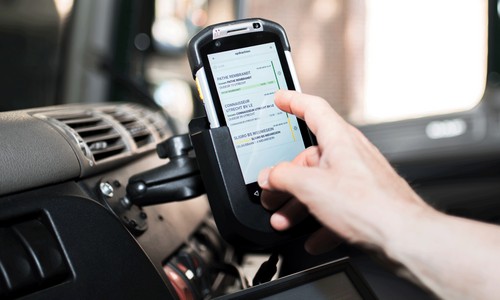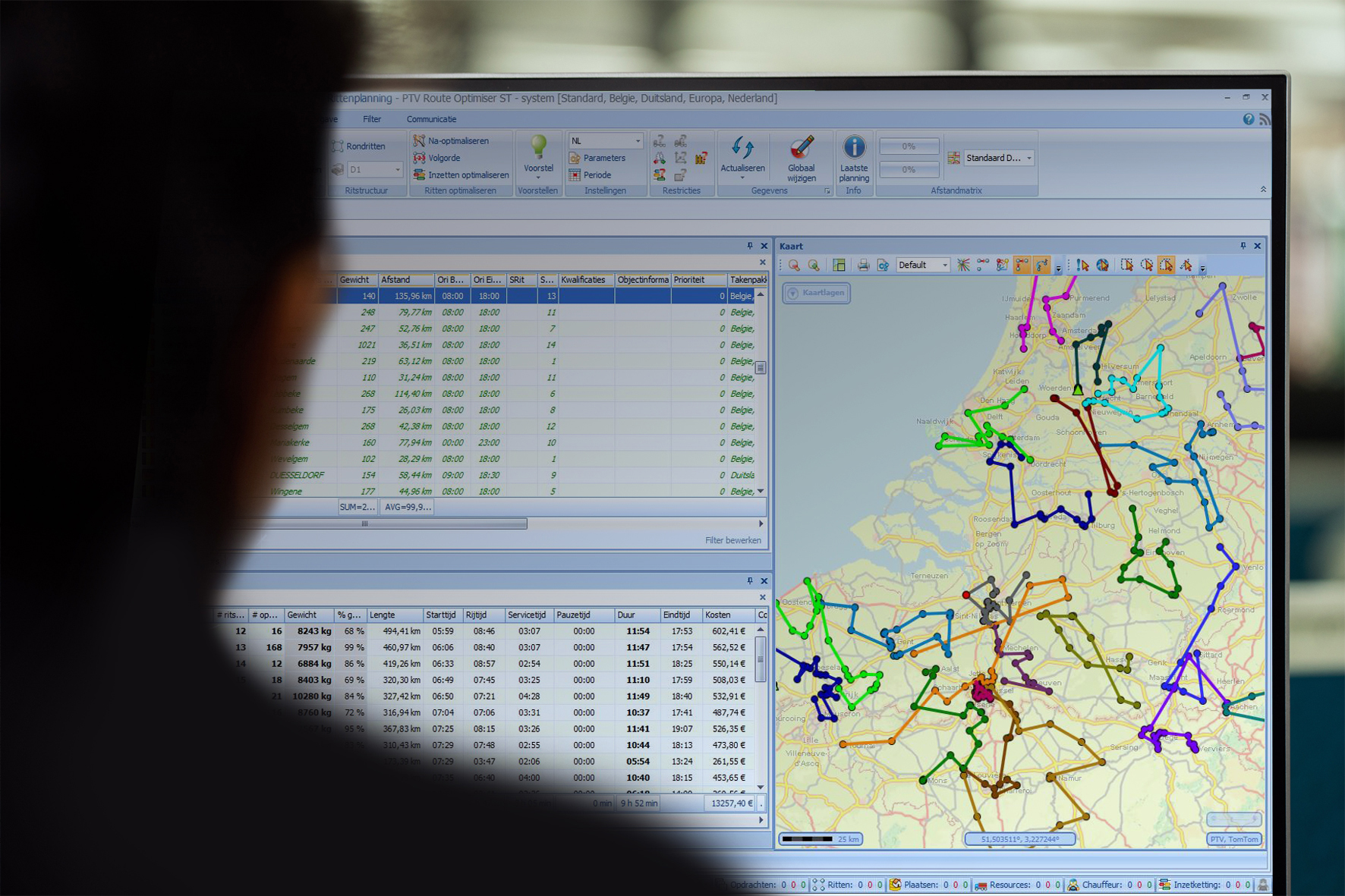The terms route planner and route optimisation are used too often. It seems that the terms are synonyms, but that is definitely not correct. There is a big difference between the two planning methods. A short explanation.
What is a route planner?

A route planner is in fact nothing more than a system in which you enter a destination. Based on the start, intermediate and end points, the system calculates which route is preferable. The screen shows how many miles you have to cover and how long it will take you.
In road transport, route planning systems are used to calculate the optimal route for a single truck with two or more delivery addresses. The route planner takes into account all data that is relevant for road transport: maximum headroom and axle loads, routes for HGVs, environmental zones and time windows in city centres, etc.
Such a system not only calculates the distance and driving time, but also the transport costs and toll costs. All that is needed is geographic data such as place names, postcodes, street names and house numbers or geographic coordinates – useful for new construction sites, for example. Based on that data, the system generates a map showing the route. Optionally, the planner can digitally forward the route to the driver of the relevant truck.
What is a route optimisation?
Route optimisation does much more than a route planner. The software not only optimises the route of one truck, but of an entire fleet. Based on all loading and unloading addresses, the system automatically calculates the optimal distribution of the shipments among the trucks. The goal: to deploy the trucks as efficiently as possible and to minimise transport costs.
The system takes all kinds of factors into account when allocating the shipments. Does the fleet only include trucks with trailers or, for example, also rigids and trailer combinations? Which orders do or do not fit in the cargo space? Is it possible to accommodate all time windows and delivery agreements? A trip planning system makes planning efficient. The planners have a better overview, do less puzzling and generate a reliable planning proposal at the touch of a button.

Thanks to its enormous flexibility, route optimisation software is suitable for planning daily journeys with multiple stop points, for preparing detailed quotations and for evaluating alternative logistics strategy. The system can be fed with all order data from one day, but also with data from a longer period, for example.
Does route optimisation software replace the planner?
There is only one answer to that: absolutely not. Of course, route optimisation software can calculate thousands of routes with different possibilities in seconds. It takes into account hundreds of factors that influence costs and delivery agreements. That’s more than a planner can handle.
But only a planner can make decisions that will actually make your customers and colleagues happy. They are the ones who put the icing on the cake. The planner can check and adjust the data and knows what is needed to provide the best possible service to customers. The planner knows where they want to send the drivers and can intervene in time if a driver is delayed.

Merci infiniment pour votre informations. Très instructive… merci encore!!